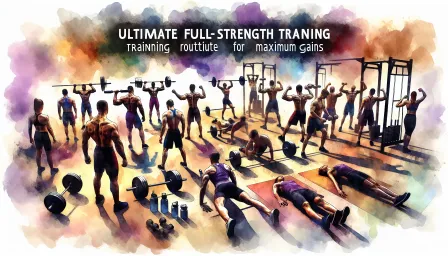The Ultimate Guide to Waist Circumference and Body Composition: Tips and Insights

Discover the crucial link between waist circumference and body composition. This article provides valuable tips and insights for improving health and fitness.
Maintaining a healthy waist circumference and understanding body composition are essential components of overall health and wellness. Not only do these factors contribute to appearance and fitness levels, but they also play a crucial role in determining the risk of various health conditions. This ultimate guide aims to provide you with comprehensive information, actionable tips, and valuable insights into waist circumference and body composition.
Understanding Waist Circumference
Waist circumference is a simple measurement taken around the narrowest part of the torso, typically above the belly button and below the ribcage. This measurement provides an indication of abdominal fat, which is a significant risk factor for metabolic diseases. Maintaining a healthy waist circumference can help reduce the risk of diabetes, heart disease, and stroke.
Why Waist Circumference Matters
Abdominal fat is classified into two types: subcutaneous fat (located just under the skin) and visceral fat (surrounding the organs). Visceral fat is particularly concerning due to its association with various health conditions, including insulin resistance, inflammation, and cardiovascular problems. Monitoring waist circumference helps to detect excessive visceral fat and take necessary actions to manage it.
How to Measure Waist Circumference
Measuring waist circumference is straightforward and can be done with a tape measure at home:
- Stand with your feet shoulder-width apart.
- Locate your natural waistline (usually just above the belly button).
- Wrap the tape measure around your waist, ensuring it's parallel to the floor and not too tight.
- Take the measurement after exhaling gently.
It’s important to use a consistent method every time you measure to track changes accurately over time.
Body Composition: The Bigger Picture
While waist circumference provides insight into abdominal fat, body composition offers a more detailed analysis of overall health. Body composition describes the percentages of fat, bone, water, and muscle in the human body, giving a clearer picture of fitness and health status than weight alone.
The Components of Body Composition
- Fat Mass: The total mass of all the fat in the body. High body fat percentage can increase the risk of various health conditions.
- Lean Body Mass: Includes muscles, bones, water, and connective tissues. Higher lean body mass is generally indicative of better fitness.
- Bone Density: Strong bones are crucial for a healthy body, and maintaining good bone density can prevent conditions such as osteoporosis.
Methods to Assess Body Composition
There are various methods to assess body composition, ranging from simple techniques to advanced technology:
- Body Mass Index (BMI): A quick screening tool that uses height and weight, although it doesn't assess body fat distribution.
- Skinfold Calipers: Measures the thickness of skinfolds at various body sites to estimate body fat percentage.
- Bioelectrical Impedance Analysis (BIA): Measures the resistance of body tissues to electrical currents to estimate body composition.
- Dual-Energy X-ray Absorptiometry (DEXA): An advanced method providing detailed data on bone density, fat mass, and muscle mass.
- Hydrostatic Weighing: Measures body fat by submerging an individual in water and calculating body volume.
Improving Waist Circumference and Body Composition
Dietary Considerations
Nutritional choices significantly impact waist circumference and body composition. Here are some effective dietary strategies:
- Balanced Diet: Ensure you consume a variety of nutrients from whole foods, including fruits, vegetables, lean proteins, whole grains, and healthy fats.
- Caloric Control: Although it’s essential to ensure adequate nutrient intake, monitoring overall caloric intake helps manage body weight.
- Limited Sugars and Refined Carbs: Reducing the intake of sugars and refined carbs can help decrease abdominal fat.
- High Fiber Intake: Foods high in fiber can promote a feeling of fullness and aid in weight management.
- Hydration: Drinking sufficient water supports metabolism and aids in overall bodily functions.
Exercise and Physical Activity
Regular physical activity is crucial for improving body composition and reducing waist circumference. Consider incorporating the following types of exercise into your routine:
- Aerobic Exercise: Activities such as running, cycling, and swimming can burn calories and reduce overall body fat.
- Strength Training: Lifting weights and resistance exercises help build muscle mass, which can increase metabolism and aid in fat loss.
- High-Intensity Interval Training (HIIT): Alternating short bursts of intense activity with rest or low-intensity exercises can be highly effective for fat loss and improving cardiovascular health.
Lifestyle Modifications
In addition to diet and exercise, several lifestyle factors can influence waist circumference and body composition:
- Quality Sleep: Aim for 7-9 hours of sleep per night, as poor sleep is linked to weight gain and increased abdominal fat.
- Stress Management: Chronic stress can lead to weight gain, particularly around the abdomen. Practices such as meditation, yoga, and deep breathing can help reduce stress levels.
- Avoid Smoking and Limit Alcohol: Smoking and excessive alcohol consumption are associated with poor body composition and increased health risks.
Monitoring Progress and Staying Motivated
Setting Realistic Goals
Setting achievable and realistic goals is crucial for maintaining motivation and seeing progress. Consider using the SMART criteria (Specific, Measurable, Achievable, Relevant, Time-bound) for goal setting.
Regular Assessments
Regularly measuring waist circumference and assessing body composition can help track progress and make necessary adjustments to your routine. Consider scheduling these assessments at consistent intervals (e.g., monthly) to monitor changes effectively.
Building a Support System
Having a supportive network can make a significant difference in your journey. Consider joining fitness groups, engaging with online communities, or finding a workout buddy to help keep you motivated and accountable.
Conclusion
Understanding and managing waist circumference and body composition are vital for overall health and wellness. By implementing healthy dietary choices, engaging in regular physical activity, and making positive lifestyle changes, you can improve these metrics and reduce the risk of associated health conditions. Remember, progress may take time, but with consistency and dedication, you can achieve your health and fitness goals.



























